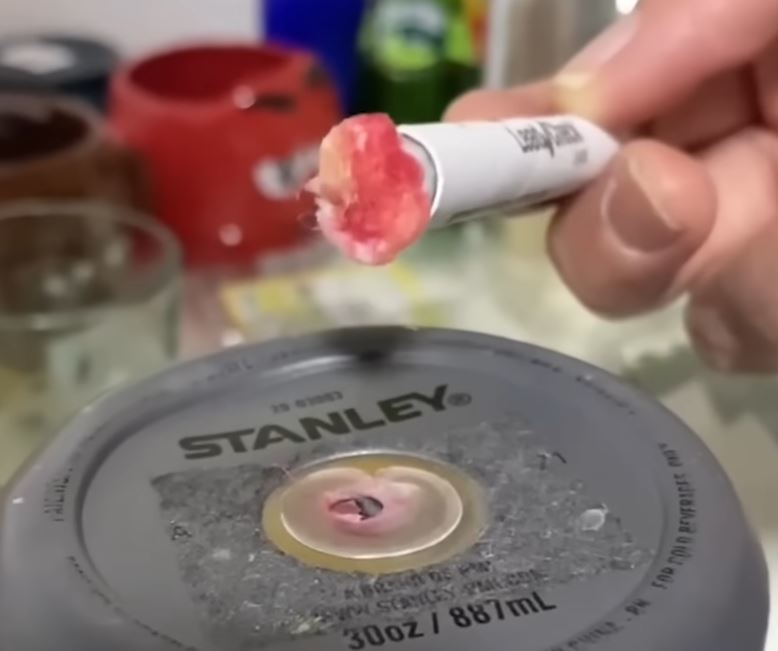Recently, claims were made that lead was detected in the ‘Stanley’ tumbler, which is gaining sensational popularity in the United States. Stanley explained, “Although lead-containing substances are used during the manufacturing process, it is not a part that comes into direct contact with consumers, so you can rest assured.”
According to CNN and Fox News on the 29th (local time), videos were recently posted on social media claiming that lead was detected when a Stanley tumbler was tested using a lead test kit.
Netizens who uploaded the video claimed that when they dipped a cotton swab into a solution that discolors when in contact with lead and then rubbed the bottom and inner surface of the tumbler with the swab, the color of the swab turned red.
Afterwards, as consumer anxiety about Stanley tumblers grew, Stanley began to provide an explanation.
A Stanley spokesperson explained, “During the manufacturing process, we use industry-standard pellets to seal the vacuum insulation at the bottom of the product, and that material contains some lead.”
He continued, “Once sealed, this part (the bottom) is covered with a layer of durable stainless steel and does not come into contact with the consumer,” adding, “Consumers can rest assured that lead will not be exposed to any part of the Stanley product that they come in contact with.”
 A video shows that when a cotton swab dipped in a lead test solution was rubbed on the bottom of a Stanley tumbler, the color of the swab turned red. Youtube capture
A video shows that when a cotton swab dipped in a lead test solution was rubbed on the bottom of a Stanley tumbler, the color of the swab turned red. Youtube captureLead is a toxic substance, and when absorbed into the body, it takes longer to be excreted than other heavy metals. According to the U.S. Centers for Disease Control and Prevention (CDC), if lead is absorbed into the body, it can cause kidney problems, anemia, reproductive problems, and developmental problems.
In response to Stanley’s explanation, some environmental groups criticized, saying, “It becomes a problem if the bottom seal is peeled off,” and “If the tumbler is safe only if it is kept in a ‘completely undamaged state,’ the manufacturer is passing the material safety problem to the customer.” did.
Recently, Stanley tumblers have become very popular among the MZ generation (Millennials + Generation Z) in the United States. On the 17th, a ‘sweeping’ thief appeared in California, stealing 65 Stanley tumblers worth about $2,500 (about 3.32 million won).
Earlier this month, people were seen setting up tents and waiting overnight outside a supermarket to buy a limited edition Valentine’s Day quencher tumbler launched in collaboration between Stanley and Starbucks. The selling price of this tumbler is $45 (approximately 60,000 won), but it was also traded for $500 to 600 dollars (approximately 660,000 to 790,000 won) on the US auction site eBay.
Hyewon Lee, Donga.com
Source: Donga
Mark Jones is a world traveler and journalist for News Rebeat. With a curious mind and a love of adventure, Mark brings a unique perspective to the latest global events and provides in-depth and thought-provoking coverage of the world at large.